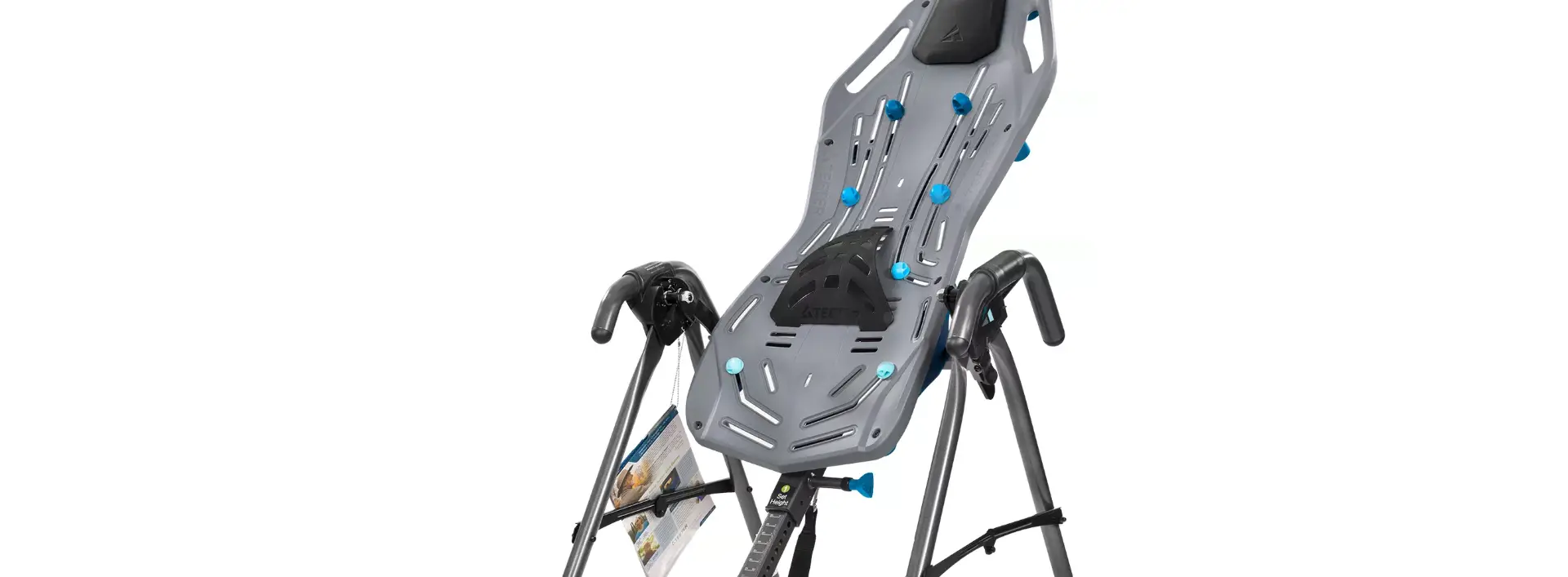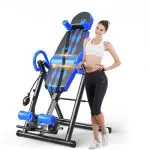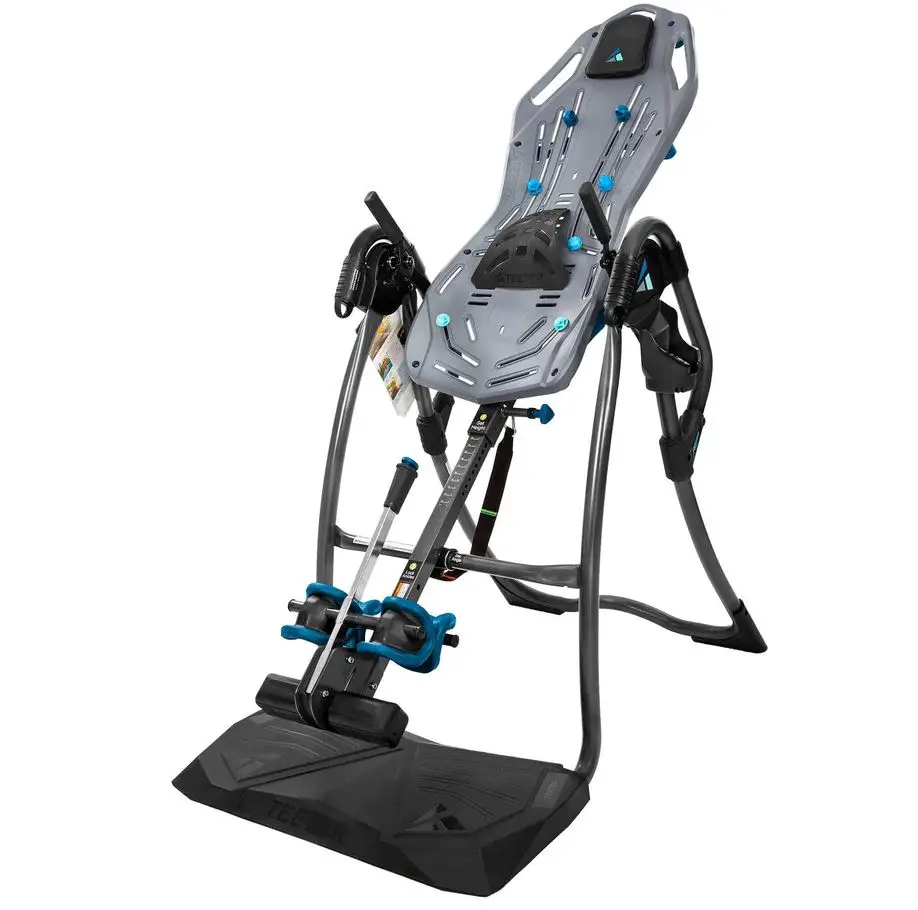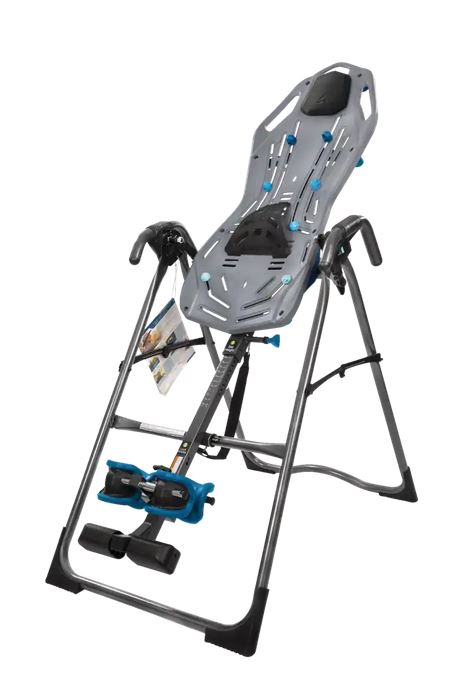Back Pain and Teeter Inversion Tables
If you suffer from back pain, then odds are strong that you’ve heard of Teeter inversion tables and all of their possibilities, and what does a inversion table do. Teeter inversion tables, in a nutshell, are equipment pieces that can be beneficial to individuals who are trying to manage back pain and various other conditions.
Teeter is the name of a brand that presents people with three separate choices in inversion tables. These tables enable individuals to utilize traction in order to stretch their back muscles. This stretching tugs tissues that are tight in directions away from the spine. The aim behind this is to establish extra space in the middle of the vertebrae.
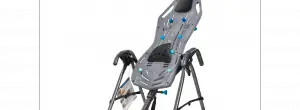
Using a Teeter inversion table is straightforward. It involves hanging the body upside down and therefore stretching the spine out. Inversion therapy is a physical therapy variety that zeroes in on decompression.
Spine decompression can be advantageous for the mobility of the back. Beyond that, it can bring on superior flow of blood to the spine. Some people compare the effects of decompression to those that are accessible through chiropractic adjustments.
Inversion tables may be helpful to individuals who have pinched nerves. If your lumbar spine has an excessive level of tension, then that may bring on the development of pinched nerves.
Teeter inversion tables may be appropriate for people who have both upper and lower back pain. They may minimize or eliminate feelings of back pain for limited spans of time.
It’s understandable that people who regularly and frequently deal with back pain want to find solutions that actually work. They sometimes ask themselves whether Teeter inversion tables are actually effective. If you’re considering getting one of these tables, you should learn more about how efficacious and dependable they may be first.
Do Teeter Inversion Tables Work? Find Out Here
Teeter inversion tables enable individuals to take advantage of inversion therapy. Spinal traction is another name for this sort of therapy. Various studies indicate that inversion therapy may be beneficial for back pain and different conditions that exist.
The truth is, though, that the consensus regarding whether these tables work is uncertain, according to Susan Bernstein and Dr. Tyler Wheeler of WebMD. There are individuals who believe that Teeter inversion tables can provide assistance to those who have compressed disk or low back pain.
They believe that they can provide relief that has a short duration. Inversion therapy most likely is not reliable for back pain treatment that’s extended in scope.

There are studies that hint that this type of therapy may be able to strengthen flexibility. These studies hint that the therapy may be able to decrease back spasms, joint pain and, last but certainly not least, decompression of the spinal cord. In spite of that, safety concerns also exist.
These equipment items may not be completely safe for all users. They can bring on falling that can trigger physical traumas as well. It isn’t unheard of for these tables to cause injuries to users. If you have any kind of medical condition, then you should exercise a high degree of caution regarding these tables. You should speak with a reputable doctor prior to starting use.
Jane Chertoff and Gerhard Whitworth of Healthline say that additional research is essential in order to verify whether hanging the body upside down can provide users with any health advantages that are genuine.
Side Effects and Inversion Tables
It isn’t just critical to comprehend how inversion tables function ideally. It’s just as critical to take note of any and all possible side effects. There are users who have indicated that these tables have brought on feelings of lightheadedness and headaches.
They say that these effects popped up once they were completely through with their therapy sessions. It’s imperative for people who use these tables to be prudent. Lack of caution during use can trigger back injuries involving inversion. This may be the result of straining that’s abrupt in nature.
Users may be able to decrease their chances of developing unpleasant inversion table side effects. It may be wise for users to begin use in an unhurried manner. It may be beneficial for them to try angles that are subtle. They can move into the direction of complete inversion by degrees.
It’s imperative for table users to refrain from ever inverting themselves without being certain that they’re in strong health. They should refrain from inverting their bodies if they any reservations at all regarding the concept, too.
People who are planning on going forward with Teeter inversion table use should seek the permission of doctors in advance. Doctors can help them take charge of symptoms that may emerge.
Who Should Use An Inversion Table
Teeter inversion tables are in no way, shape or form fitting for all kinds of people. Use of these tables may make some persons susceptible to the collection of blood within the head and upper body. This may take place as inversion goes on.
Use of these tables may also make some persons susceptible to higher blood pressure. Inversion can bring on extra eyeball pressure. It can speed up the heart rate. If you have cardiovascular conditions, glaucoma, hypertension or retinal detachment, then you should stay away from Teeter inversion tables.
The possibility of inversion table use hazards become much stronger in persons who already have problems that relate to their spines. People should refrain from attempting inversion therapy prior to getting authorization from doctors.
Some people have passed away as the effect of extended inversion of their bodies. If you’re just beginning Teeter inversion table use, you should not invert your body for any time span that surpasses 60 seconds at an angle that’s medium in scope.
Potential Hanging Down Advantages
Inversion therapy strives to turn around spinal gravity compression. It can stretch spines out. It can reduce tension on nerve roots and discs as well. The therapy can even boost the amount of space in the middle of the vertebrae. There are a number of possible positive components that are linked to inversion therapy and Teeter inversion table use.
Teeter inversion table use may be able to aid individuals who have sciatica , scoliosis and back pain for limited stretches of time. It may be able to strengthen the wellness of the spine. It may enable some individuals to steer clear of back surgery. It may boost flexibility all the same. The bulk of research that has been conducted on inversion therapy has been somewhat limited. Researchers have not assessed the effects of inversion tables on substantial numbers of individuals yet.
Safe and Appropriate Teeter Inversion Table Use
It’s vital to use Teeter inversion tables in safe and appropriate ways no matter what. Users should lie down on these tables and secure their bodies onto them for safety purposes. After that, they can tilt their bodies. They can do so until their hearts are finally higher than their heads.

It can be extremely smart to utilize Teeter inversion tables with supervision from capable and seasoned physical therapists. Professionals can demonstrate proper table use. They can monitor individuals closely as they hang.
Use of these tables at home may be appropriate for individuals who are young and who are fully devoid of heart troubles. If you’re thinking about using a Teeter inversion table at home, then you should go above and beyond to abide by a handful of safety suggestions.
It can help to request supervision from a person you trust fully. Just say no to hanging without any in-depth monitoring from a friend, family member, significant other or neighbor. Monitoring can come in handy in the event that you’re unable to go back to your upright position.
More Tips On Using An Inversion Table
You should refrain from leaning your body back fully. It can be smart to tilt your body back at an angle of 30 degrees. Elderly people may wish to be even more cautious, too. It may be preferable for elderly persons to tilt their bodies back at merely 10 degrees.
It can be prudent to use Teeter inversion tables for brief periods. If you’re a newbie to the world of inversion therapy, you should attempt table use for anywhere between 30 and 60 seconds daily. You should strive to assess your attitude toward the therapy. You should restrict your Teeter inversion table use to five minute stretches two times per day.
You would never even think about getting into a vehicle without putting on your seat belt. You should apply that same level of caution and dedication to your approach to inversion therapy. Utilize your harnesses or safety straps. If you fail to do so, then you may make yourself vulnerable to all of the hazards of slips, falls and substantial injuries.
You should tilt upward gradually. Once you’re through hanging, you should return to your previous spot in a gradual way. If you try to get back in an overly rapid manner, you may bring on back disk pain or muscle spasms. Regular stretching exercises can be helpful to inversion table users.
